Home>Garden Essentials>What Does A Sesame Seed Grow Into
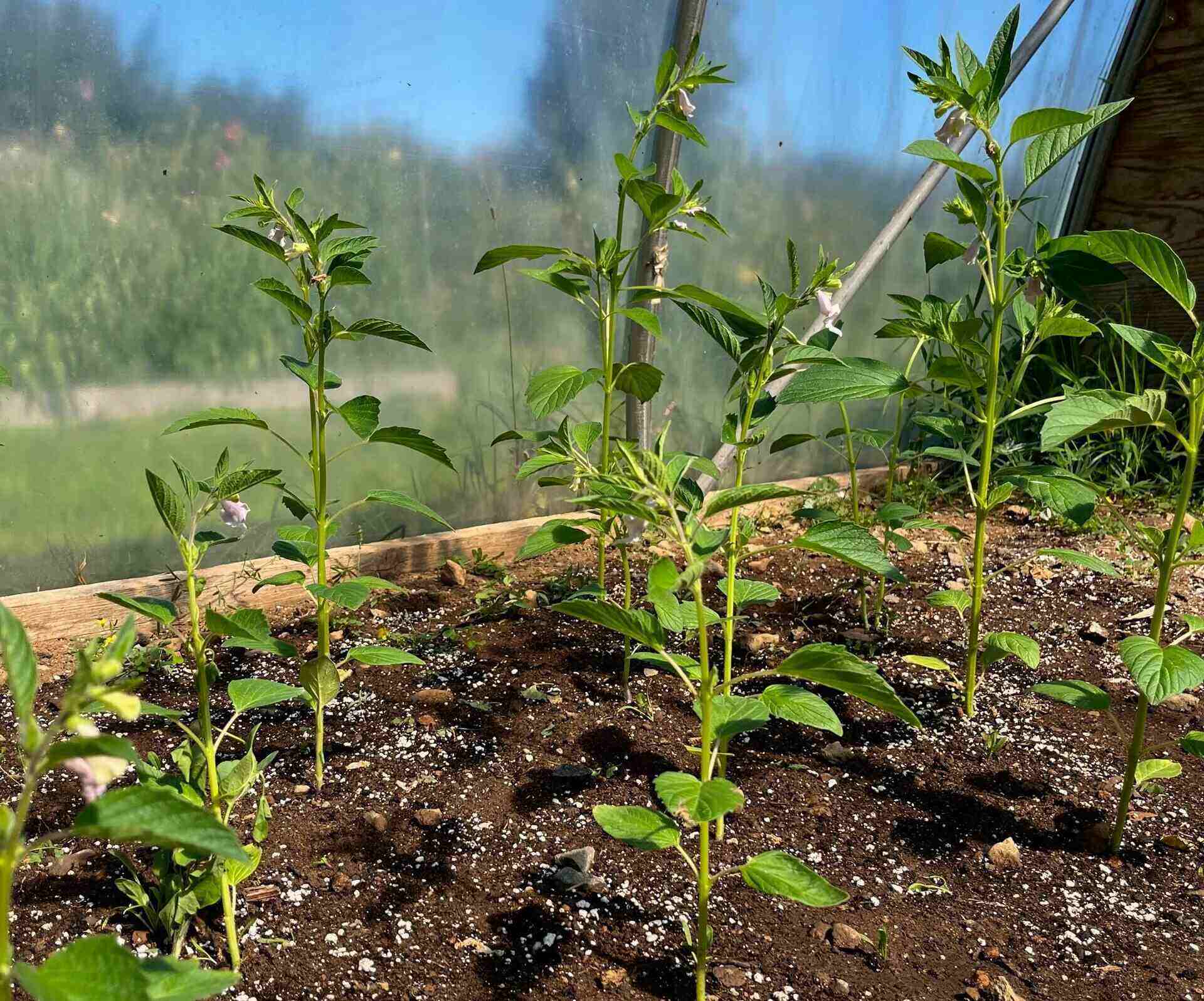

Garden Essentials
What Does A Sesame Seed Grow Into
Modified: March 15, 2024
Discover what a sesame seed can grow into in your garden and learn about the fascinating process of cultivation.
(Many of the links in this article redirect to a specific reviewed product. Your purchase of these products through affiliate links helps to generate commission for Storables.com, at no extra cost. Learn more)
Introduction
Welcome to the world of sesame seeds! These tiny, unassuming specks have played a significant role in human history and are an essential ingredient in many cuisines around the globe. But have you ever wondered what exactly a sesame seed grows into? In this article, we will embark on a journey through the life cycle of a sesame seed, exploring its stages of growth from germination to seed production. Along the way, we will uncover fascinating facts about these versatile seeds and their uses beyond the kitchen.
Sesame seeds, scientifically known as Sesamum indicum, come from the flowering plant of the same name. Native to Africa and widely cultivated in tropical and subtropical regions, sesame seeds have been prized for their nutritional value and medicinal properties for thousands of years. They are rich in healthy fats, vitamins, and minerals, making them a valuable addition to any diet.
But let’s not underestimate the humble sesame seed’s potential. From the moment it takes root in the soil, this minuscule seed embarks on a remarkable journey of growth and transformation, evolving into a plant with vibrant flowers and eventually producing more seeds, perpetuating the cycle of life. Join us as we delve into the extraordinary life cycle of the sesame seed and discover the marvels it holds.
Key Takeaways:
- The Life Cycle of Sesame Seeds
Sesame seeds go through a fascinating journey from germination to seed production, showcasing the resilience and interconnectedness of nature. Each stage, from flowering to harvesting, plays a crucial role in the plant’s life. - Versatile Uses of Sesame Seeds
Beyond being a tasty addition to dishes, sesame seeds offer a wide range of benefits. From traditional medicine to skincare and even agricultural and industrial applications, these tiny seeds hold diverse and valuable properties.
Read more: What Is Sesame Seed
Sesame Seeds: A Small but Mighty Start
While sesame seeds are small in size, they possess remarkable potential. Weighing less than a gram each, these seeds may seem insignificant, but they contain all the genetic material needed to give life to a new plant. Enclosed within their hard, protective outer shell is the embryo, ready to sprout and unfurl its leaves. This tiny powerhouse is packed with nutrients and energy, providing the essential elements for growth.
One of the key characteristics of sesame seeds is their ability to remain dormant until the right conditions for growth are met. These conditions include adequate moisture, temperature, and oxygen levels. Once all these factors align, the seed triggers a process known as germination, marking the beginning of its journey towards becoming a fully-fledged plant.
It’s fascinating to think that within this small seed lies the potential to enrich our lives in numerous ways. Sesame seeds have long been cultivated for their culinary uses, adding a delightful nutty flavor and crunch to our favorite dishes. From sprinkling them on top of bread and pastries to being the star ingredient in sauces and dressings, sesame seeds enhance the taste and texture of a wide variety of foods.
But the wonders of sesame seeds don’t stop there. These tiny powerhouses are also utilized in various other fields, such as medicine and cosmetics. Extracts of sesame seeds are used in traditional medicine practices for their antioxidant and anti-inflammatory properties. In the world of cosmetics, sesame oil is prized for its moisturizing and skin-nourishing abilities, making it a common ingredient in skincare products.
So, take a moment to appreciate the small but mighty start of the sesame seed. From its unassuming appearance comes a world of possibilities and benefits, waiting to be explored. Let’s now delve into the different stages of a sesame seed’s life cycle to unravel the marvels that lie within.
The Life Cycle of a Sesame Seed
The life cycle of a sesame seed is a captivating journey that encompasses several distinct stages, each essential for its growth and development. From germination to seed production, let’s explore the different milestones in the life of a sesame seed.
Germination: When Life Begins
The first stage in the life cycle of a sesame seed is germination. During this process, the seed absorbs moisture from its surroundings, causing it to swell and soften. As the seed takes in water, it activates enzymes that break down complex organic compounds into simpler forms that the developing plant can use for energy.
Once the seed has absorbed enough moisture and its internal processes have kickstarted, the outer shell cracks, and a small root called the radicle emerges. The radicle anchors the seed in the soil and begins to absorb water and nutrients from the surrounding environment.
Seedling Stage: The Beginnings of Growth
With the radicle established, the seed enters the seedling stage. At this point, the seedling begins to develop its first leaves, known as cotyledons. These initial leaves provide nourishment to the young plant until it can produce its food through photosynthesis.
The seedling also starts to develop a stem, which elongates and pushes the cotyledons above the soil’s surface. As the stem grows, it carries nutrients and water from the roots to the rest of the plant, aiding in its overall development.
Read more: What Does Sesame Seed Oil Taste Like
Vegetative Stage: Maturing into a Plant
As the seedling continues to grow, it enters the vegetative stage. During this phase, the plant’s growth accelerates, and more leaves form along the stem. These leaves play a vital role in photosynthesis, harnessing energy from sunlight and converting it into chemical energy to fuel the plant’s growth.
The roots of the plant also expand during the vegetative stage, reaching deeper into the soil to access water and nutrients. This extensive root system provides stability to the plant and facilitates the uptake of essential resources for its continued development.
Flowering Stage: Beauty in Bloom
Once the plant has reached maturity, it enters the flowering stage. This is a visually stunning phase in the sesame seed’s life cycle, as it produces vibrant and delicate flowers. Sesame flowers can be various colors, including white, pink, purple, or yellow, depending on the variety of sesame seed.
These beautiful flowers serve a vital purpose: pollination. Insects, such as bees, butterflies, and beetles, are attracted to the bright flowers and aid in the transfer of pollen from the male to the female parts of the flowers. This process ensures the production of viable seeds necessary for the next generation of sesame plants.
Seed Production: The Circle of Life
Following successful pollination, the flowers develop into seed pods, commonly known as capsules. These elongated pods contain the developing sesame seeds. As the seeds grow within the pods, they undergo maturation, accumulating nutrients and oils to support their future growth and nourishment.
When the seeds are fully developed and mature, the seed pods dry out and begin to split open. This signals that the seeds are ready for harvesting. At this stage, the sesame seeds are removed from the plant and prepared for various uses, whether culinary, medicinal, or industrial.
The life cycle of a sesame seed then comes full circle as the harvested seeds are dispersed, either intentionally or through natural processes, to start the cycle anew.
The journey of a sesame seed, from germination to seed production, is a testament to the resilience and adaptability of nature. As we delve deeper into the world of sesame seeds, let’s now explore the process of harvesting and the multiple uses of these remarkable seeds beyond the culinary realm.
Germination: When Life Begins
Germination marks the beginning of life for a sesame seed, a pivotal stage in its life cycle. During this process, the dormant seed awakens from its slumber and begins the journey of growth and development. Let’s explore the fascinating process of germination in more detail.
When the environmental conditions are favorable, such as adequate moisture, temperature, and oxygen levels, the sesame seed comes to life. It absorbs water from its surroundings, causing it to swell and soften. This moisture triggers biochemical changes within the seed, activating enzymes that break down complex compounds into simpler forms that the developing plant can utilize.
As the seed’s internal processes kickstart, the outer shell cracks, and a tiny root called the radicle emerges. This radicle anchors the seed in the soil and is the first structure to emerge during germination. It plays a crucial role in absorbing water and nutrients from the surrounding environment, providing nourishment for the growing plant.
Simultaneously, the shoot also emerges from the seed. It grows upwards towards the soil surface, seeking sunlight. The shoot consists of the plumule, which will develop into the plant’s leaves, and the hypocotyl, the stem-like structure that supports the growth of the emerging plant.
During this initial stage of germination, the sesame seed relies on stored energy reserves for growth and nourishment. These energy reserves are stored in the cotyledons, the first leaves of the young plant. The cotyledons provide the necessary nutrients until the plant can produce its food through photosynthesis.
The germination process is governed by a delicate balance of factors. Adequate moisture is essential for the seed to absorb water and activate enzymes, while oxygen availability is crucial for respiration. The optimal temperature range for sesame seed germination is typically between 20 to 30 degrees Celsius (68 to 86 degrees Fahrenheit).
Germination is a vital stage in the life of a sesame seed as it marks the transition from dormancy to active growth. It demonstrates the seed’s ability to respond to favorable environmental conditions and harness its stored potential for new life. Once germination is successfully completed, the seedling stage begins, initiating further growth and development of the young plant.
The germination process holds great significance not only in the life cycle of sesame seeds but in agriculture as a whole. It is a fundamental process that allows plants to propagate, ensuring the continuation of various plant species and providing a foundation for agriculture and food production.
Understanding the intricacies of germination enables gardeners, farmers, and researchers to optimize seed germination conditions for better crop yields. By providing the ideal environment, such as proper moisture levels, suitable temperature, and adequate oxygen, we can support the germination process and facilitate the growth of healthy seedlings.
Germination is a testament to the sheer resilience and resourcefulness of plants, showcasing nature’s incredible ability to bring life from seemingly dormant seeds. From this small and humble beginning, the sesame seed embarks on a remarkable journey of growth, ultimately evolving into a fully-fledged plant with vibrant flowers and bountiful seeds.
Read more: What Plant Does Sesame Seeds Come From
Seedling Stage: The Beginnings of Growth
After the successful germination of a sesame seed, the next stage in its life cycle is the seedling stage. This phase marks the beginning of visible growth as the tiny seedling emerges from the soil and begins to establish its presence in the world. Let’s explore the fascinating details of the seedling stage and how it sets the foundation for the growth of a mature sesame plant.
As the sesame seed germinates, the first structure to emerge is the radicle, a small root that anchors the seedling in the soil. The radicle plays a critical role in absorbing water and nutrients from the soil, providing the necessary resources for growth. Simultaneously, the shoot emerges, composed of the hypocotyl (stem-like structure) and the plumule (embryonic leaves).
During the seedling stage, the plumule develops and unfolds its cotyledons, which are the first leaves of the young plant. These cotyledons provide nourishment for the seedling until it can establish photosynthesis, the process through which plants produce their food using sunlight, carbon dioxide, and water.
As the seedling grows, the stem elongates and pushes the cotyledons above the soil surface. This upward growth is driven by cells dividing and expanding at the shoot’s tip. The stem carries nutrients and water from the roots to the rest of the plant, facilitating its growth and development.
At the same time, the root system branches out beneath the soil. The primary roots elongate and give rise to secondary roots, creating a network that increases the plant’s ability to absorb water and nutrients from the soil. This well-developed root system plays a vital role in anchoring the plant and providing stability as it grows taller.
The seedling stage is a critical phase in the life of a sesame plant. It is during this period that the plant establishes itself in its environment and starts to develop the necessary structures for future growth. The cotyledons serve as the energy source for the young plant, allowing it to continue growing and developing until it can independently produce its food through photosynthesis.
During the seedling stage, the sesame plant is particularly vulnerable to environmental conditions and external factors. Adequate moisture, proper sunlight exposure, and protection from extreme temperatures and pests are crucial for its healthy growth. Gardeners and farmers must provide optimal conditions for seedlings, such as consistent watering and protection from frost or excessive heat, to ensure their success.
As the seedling stage progresses, the sesame plant becomes more robust and capable of withstanding various environmental stresses. With a strong root system and a growing stem, it gains the resilience and adaptability needed to navigate the challenges it will encounter throughout its life.
From the humble beginnings of a germinated sesame seed, the seedling stage magnifies the plant’s potential and sets the stage for its future growth and development. In the next stage of the sesame seed’s life cycle, we will explore the vegetative stage, where the plant continues to mature and flourish. Stay tuned to discover the wonders that lie ahead!
Vegetative Stage: Maturing into a Plant
As the sesame seedling continues to grow, it enters the vegetative stage, a crucial period of development where the young plant further matures and establishes its structure. During this stage, the plant undergoes significant changes, both above and below the ground, setting the foundation for its future growth and productivity. Let’s delve into the details of the vegetative stage and witness the transformation of the sesame plant.
With a well-established root system and a growing stem, the sesame plant starts to exhibit robust growth during the vegetative stage. The stem elongates further, allowing the plant to reach for sunlight and optimize its exposure to this vital energy source. The stem carries water and nutrients from the roots to the leaves and other parts of the plant, facilitating its development and various metabolic processes.
As the plant grows, it produces more leaves, which play a crucial role in the process of photosynthesis. These leaves capture sunlight and convert it into chemical energy, utilizing carbon dioxide from the air and water from the roots. Through this marvelous process, the sesame plant creates glucose, its primary source of energy, and releases oxygen back into the atmosphere.
The vegetative stage is characterized by the development of true leaves, distinct from the initial cotyledons that provided nourishment in the seedling stage. These true leaves are typically larger and more anatomically complex, enabling the plant to maximize its photosynthetic capacity.
During this stage, the sesame plant focuses on vegetative growth, directing its energy towards developing a strong and extensive foliage system. The plant invests in leaf production, branching, and overall biomass accumulation. It uses the stored energy reserves accumulated during germination and the early stages of growth to fuel this burst of vegetative growth.
The root system of the sesame plant also continues to expand during the vegetative stage, searching for water and nutrients in the soil. The primary roots give rise to secondary and tertiary roots, extending deeper into the ground and exploring a larger volume of soil. This well-developed root system enhances the plant’s ability to access essential resources and provides stability to support its increasing height and weight.
Throughout the vegetative stage, the sesame plant becomes sturdier, more resilient, and better adapted to its environment. It gains the ability to withstand various environmental stresses, such as wind, temporary drought conditions, and temperature fluctuations.
Optimal growth during the vegetative stage requires adequate nutrition, including a balanced supply of essential macro and micronutrients. Nitrogen, phosphorus, and potassium are particularly important for vegetative growth, supporting leaf development, photosynthesis, and overall plant vigor.
Gardeners and farmers must ensure that the sesame plants receive the necessary care and attention during this stage. Regular watering, fertilization, and weed control are essential to maximize growth and productivity. Timely pruning or trimming can also help shape the plant, encourage lateral branching, and improve overall plant structure.
As the vegetative stage unfolds, the sesame plant undergoes significant maturation and prepares itself for the next phase of its life cycle – the flowering stage. With a strong root system, an extensive foliage network, and the ability to produce energy through photosynthesis, the plant is on the path to flourishing and fulfilling its role in nature and the agricultural ecosystem.
Stay tuned to uncover the beauty and significance of the flowering stage, where the sesame plant bursts into bloom, captivating us with its vibrant and delicate flowers.
Flowering Stage: Beauty in Bloom
The flowering stage is a remarkable phase in the life cycle of a sesame plant, where it bursts into a display of vibrant and delicate blossoms. This stage not only captivates with its beauty but also plays a crucial role in the reproduction and continuation of the plant species. Let’s dive into the enchanting world of the flowering stage and explore its significance.
As the sesame plant reaches maturity during the vegetative stage, it transitions to the flowering stage, fueled by the accumulation of energy and nutrients. This stage is marked by the emergence of colorful flowers, each possessing its unique hues and characteristics. The flowers can be white, pink, purple, or yellow, depending on the variety of sesame plant.
These striking flowers are not merely ornamental; they play a vital role in the reproduction of the plant. Sesame flowers are pollinated through a process involving various insects, such as bees, butterflies, and beetles. These pollinators are attracted to the bright and nectar-rich flowers, and as they move from flower to flower, they inadvertently transfer pollen, facilitating the fertilization process.
Inside the sesame flower, the reproductive organs are located. The male reproductive organ, known as the stamen, produces pollen grains. The female reproductive organ, called the pistil, contains the stigma, style, and ovary. The stigma captures the pollen grains, the style provides a pathway for the pollen to reach the ovary, and the ovary houses the seeds.
When a pollinator visits a sesame flower, it inadvertently brushes against the stamen, picking up pollen grains. As the pollinator moves to another flower, it transfers some of the pollen grains onto the receptive stigma of that flower. This process, known as cross-pollination, promotes genetic diversity and improves the chances of successful seed production.
After pollination occurs, the pollen grains germinate on the stigma and produce pollen tubes. These tubes grow down the style, reaching the ovary. Along this journey, they transport the male gametes (sperm cells) to fertilize the female gametes (egg cells) within the ovary, initiating seed development.
As the fertilization process takes place, the flower starts to wither and fade. The ovary, which holds the developing seeds, begins to swell and matures into a seed pod, commonly known as a capsule. Inside the capsule, the seeds undergo further growth and maturation, accumulating nutrients and oils necessary for their viability.
The length of the flowering stage can vary depending on environmental conditions and the specific sesame variety. However, typically, the flowering stage can range from a few weeks to a couple of months. The duration also depends on the successful pollination and fertilization of the flowers.
The flowering stage of the sesame plant is not only a visually stunning spectacle but also an essential step in the reproduction and perpetuation of the species. By attracting pollinators and facilitating the transfer of pollen, the flowers ensure the development of viable seeds, which carry the genetic material for future generations.
As the flowering stage concludes, the seed pods dry out, and the capsules split open, revealing the mature sesame seeds within. These seeds are then harvested, marking the culmination of the plant’s life cycle. From the tiny sesame seed to the magnificent blooming flower, the sesame plant’s journey is a testament to the wonders of nature’s cycles.
Next, we will explore the intriguing process of harvesting sesame seeds, as we witness the transition from the flowering stage to the final phase of the plant’s life cycle.
Seed Production: The Circle of Life
Seed production is a pivotal phase in the life cycle of a sesame plant, where the flowers give rise to seeds that carry the genetic material necessary for future generations. This phase marks the completion of the plant’s reproductive journey and the beginning of a new cycle of life. Let’s delve into the intricacies of seed production and explore its significance in the circle of life.
After successful pollination and fertilization during the flowering stage, the focus shifts to seed development. The ovary, which held the fertilized ovules, matures and transforms into a seed pod or capsule. Inside these capsules, the sesame seeds undergo further growth and maturation, gradually accumulating nutrients and oils essential for their viability.
As the seed pods ripen, they begin to dry out, causing the capsule walls to shrink and split open. This natural process, known as dehiscence, exposes the mature sesame seeds. The seeds are small, flat, and oval-shaped, with a characteristic light beige to dark brown coloration, depending on the sesame variety.
Once the capsules have opened, the sesame seeds are ready for harvesting. They are then gathered from the plants, usually through manual or mechanical methods. Harvesting techniques aim to collect the seeds efficiently while minimizing damage and preserving seed quality.
Sesame seeds are versatile and widely used in various industries, so their harvesting is an essential step in ensuring a continuous supply. Harvested seeds are cleaned, removing any debris or impurities that may have been collected during the harvesting process. This cleaning stage helps maintain the quality and purity of the seeds, making them suitable for consumption, cooking, or further industrial processing.
The harvested sesame seeds carry the genetic information needed for the next generation of sesame plants. Some seeds are intentionally saved for replanting, allowing farmers and gardeners to sustain the cycle of growth. These saved seeds serve as the starting point for the next crop, ensuring the preservation of desirable characteristics and traits.
Seed production also plays a crucial role in the dispersion and distribution of sesame plants in the wild. In nature, seeds can be dispersed by various means, including wind, water, animals, or human activities. This dispersal enables sesame plants to colonize new areas and ensures their survival in different ecosystems.
In addition to their vital role in reproduction and propagation, sesame seeds have been cultivated for centuries for their culinary and nutritional value. They add a delightful nutty flavor and texture to a wide range of dishes and are a valuable source of nutrients, including healthy fats, vitamins, and minerals.
Sesame seeds are found in various cuisines worldwide, from sprinkling them on top of bread and pastries to being a key ingredient in sauces, dressings, and confections. They are also used in traditional medicine for their potential health benefits and even find applications in cosmetics and skincare products.
The circle of life continues as the harvested sesame seeds are utilized in various ways, nourishing and supporting human life. Some seeds are sown, germinating and giving rise to new sesame plants, perpetuating the cycle of growth, flowering, and seed production.
Seed production is not only fundamental for the survival of the sesame plant but also critical for maintaining biodiversity and supporting global food security. It ensures a continuous supply of seeds that can withstand environmental challenges and contribute to sustainable agricultural practices.
As we appreciate the remarkable journey of the sesame plant, from flowering to seed production, let’s savor the bountiful benefits and diverse applications of sesame seeds. From culinary delights to medicinal and industrial uses, sesame seeds hold their place as a valuable resource in our interconnected world.
Now, let’s venture into the intriguing process of harvesting sesame seeds, as we witness the culmination of the plant’s life cycle and the transition from field to plate.
Sesame seeds grow into flowering plants that can reach a height of 3 to 6 feet. They produce small pods containing the sesame seeds, which are harvested for various culinary uses.
Read more: What Is Black Sesame Seeds
Harvesting Sesame Seeds: From Field to Plate
Harvesting sesame seeds is a crucial step that bridges the gap between the cultivation of the plants and the utilization of the seeds in various culinary and industrial applications. This process involves carefully collecting the mature seeds from the plants and preparing them for consumption, cooking, or further processing. Let’s explore the fascinating journey of harvesting sesame seeds, from the field to your plate.
The timing of sesame seed harvest is crucial to ensure optimal seed quality and yield. Harvesting typically takes place when the seed pods have fully matured and started to dry out, with their outer covering turning brown and cracking open. This indicates that the seeds have reached their peak maturity and are ready for collection.
There are several methods of harvesting sesame seeds, depending on factors such as location, scale of cultivation, and available resources. In traditional agricultural systems, harvesting is often done manually. Farmers carefully cut the mature sesame stalks near the base using sharp tools, such as sickles or scythes, ensuring minimal damage to the plants and seeds.
For larger-scale commercial operations, mechanical methods are commonly employed. Harvesters equipped with specialized attachments are used to cut the plants at the base, collect and separate the seed pods from the plant, and deposit them into containers or trailers for further processing.
Once the sesame seed pods are harvested, the next step is to extract the seeds from the pods. This can be done through manual methods or mechanical processes. In manual extraction, the harvested pods are carefully opened, and the seeds are separated by hand. This requires precision and attention to ensure all the seeds are collected.
Alternatively, mechanical processes, such as threshing and winnowing, can be employed to automate and expedite the seed extraction. Threshing involves separating the seeds from the pods using mechanical force, such as beating or rubbing. After threshing, the seed-filled capsules are winnowed, a process where the seeds are separated from the remaining plant material using air currents or sieving.
Following seed extraction, the harvested sesame seeds undergo cleaning to remove any impurities or debris that may have been collected during the harvesting and extraction processes. This is typically done using sieves, air blowers, or gravity tables, which separate the seeds based on size, weight, or density.
After the cleaning process, the sesame seeds are typically sorted for quality. This involves inspecting the seeds for any damaged or discolored ones and removing them, ensuring only high-quality seeds are retained. Sorting can be done manually or using specialized equipment that utilizes various techniques, including optical sensors and gravity separators.
Once the seeds have been harvested, extracted, cleaned, and sorted, they are ready to be utilized in a wide range of applications. Sesame seeds are commonly used in culinary endeavors, such as sprinkling them on breads, pastries, salads, and stir-fries, or grinding them into tahini or sesame oil. They add a delightful nutty flavor, crunchy texture, and nutritional value to dishes.
Sesame seeds are also utilized in the production of various food products, including snacks, sauces, dressings, and confections. They are a common ingredient in traditional cuisines around the world, adding depth and character to culinary creations.
Beyond the realm of food, sesame seeds find application in various industries. They are used in the production of cosmetics and skincare products for their moisturizing and nourishing properties. Sesame oil, extracted from the seeds, has long been valued for its versatility and health benefits.
From the vast fields where sesame plants grow to the culinary endeavors and industrial innovations that utilize the seeds, the journey of sesame seeds from field to plate is a testament to human ingenuity and the interconnectedness of our world.
So, the next time you sprinkle sesame seeds over a dish or enjoy the richness of sesame oil, take a moment to appreciate the intricate process of harvesting these seeds and the countless individuals involved in bringing them to your plate.
Sesame seeds signify not only a delicious ingredient but also a connection to agricultural communities, sustainable farming practices, and the rich cultural heritage intertwined with the cultivation and utilization of these tiny, versatile seeds.
As we savor the distinctive flavors and benefits of sesame seeds, let’s also celebrate the seeds’ journey from the fields to enriching our daily meals and enhancing our lives in countless ways.
Sesame Seeds: Beyond Culinary Delights
Sesame seeds are not merely a delicious and versatile ingredient in the culinary world; they also offer a plethora of benefits and applications beyond the realm of cooking. From traditional medicine to skincare, sesame seeds have been valued for their nutritional value and various properties. Let’s explore the wide-ranging uses and significance of sesame seeds beyond their culinary delights.
One of the notable applications of sesame seeds is in traditional medicine. Throughout history, sesame seeds have been used in ancient healing practices across diverse cultures. They are packed with essential nutrients, including healthy fats, proteins, fiber, vitamins, and minerals, making them a valuable addition to a balanced diet.
Furthermore, sesame seeds are known for their antioxidant and anti-inflammatory properties. Antioxidants help protect the body against free radicals, unstable molecules that can damage cells and contribute to various diseases. By including sesame seeds in your diet, you can harness these antioxidative benefits and support your overall health and well-being.
In addition to their internal benefits, sesame seeds offer advantages for external care as well. Sesame oil, extracted from the seeds, has been widely used in traditional skincare practices. The oil is rich in essential fatty acids, including omega-6 and omega-9, which nourish and moisturize the skin.
Sesame oil is prized for its ability to penetrate deeply into the skin, hydrating it from within. It has a light and non-greasy texture, making it suitable for various skincare applications. From massage oils to moisturizers, sesame oil delivers hydration and helps maintain the skin’s natural moisture barrier, preventing dryness and promoting a healthy complexion.
Beyond its skincare benefits, sesame oil has also found application in hair care. It can be used as a natural conditioner, adding shine and moisture to the hair. Massaging the scalp with warm sesame oil nourishes the hair follicles and helps promote healthy hair growth.
Furthermore, sesame seeds offer practical uses in the realm of agriculture. Sesame oil has been used as a natural pesticide, particularly in organic farming practices. It has shown potential in repelling certain pests and can be used as a deterrent in protecting crops from insect damage.
In industrial applications, sesame oil serves as an important ingredient in the production of various products. It is used in the manufacturing of soaps, detergents, lubricants, and even biofuels. The high smoke point of sesame oil also makes it suitable for cooking methods that require high temperatures, such as stir-frying and deep-frying.
Overall, sesame seeds offer a wide range of benefits and applications, extending far beyond their culinary uses. From their potential in traditional medicine to their nourishing qualities in skincare, sesame seeds have earned their place in various aspects of our lives.
As we continue to explore the wonders of sesame seeds, let’s embrace their versatility and harness the array of benefits they offer. Whether enjoying their flavors in a culinary creation or incorporating sesame oil into a skincare routine, let sesame seeds be a reminder of the interconnectedness between nature, wellbeing, and the diverse applications of this tiny, mighty seed.
So, the next time you come across sesame seeds, consider their remarkable qualities and the wealth of opportunities they present. Let sesame seeds transcend the boundaries of the culinary world and inspire you to explore their multifaceted attributes further.
Conclusion
The world of sesame seeds is a captivating realm that extends beyond their small size. From their humble beginnings as dormant seeds, sesame seeds embark on a remarkable journey of growth, development, and transformation. The life cycle of a sesame seed is a testament to the resilience, adaptability, and interconnectedness of nature.
From germination to seedling stage, vegetative growth to flowering, and ultimately seed production, each phase plays a crucial role in the plant’s life. Germination marks the awakening of a seed and signifies the beginning of its growth. The seedling stage sees the plant establishing its root system, developing leaves, and preparing for greater heights.
The vegetative stage propels the plant’s growth as it produces more leaves and expands its root system, enhancing its ability to absorb nutrients and water. In the flowering stage, the sesame plant showcases its beauty, attracting pollinators and ensuring the production of seeds that carry the genetic material for the next generation.
Seed production is a significant milestone in the life cycle of a sesame plant, marking the culmination of its reproductive journey. Through the harvesting and extraction of the mature seeds, sesame seeds find their way from the fields to our plates, enriching our culinary experiences with their nutty flavor and crunchy texture.
However, the wonders of sesame seeds extend well beyond their culinary delights. These versatile seeds offer nutritional benefits, serving as a source of essential nutrients and providing antioxidant and anti-inflammatory properties. Sesame seeds have been used in traditional medicine for ages, offering potential health benefits and contributing to overall well-being.
Furthermore, sesame oil derived from the seeds has found applications in skincare and hair care. Its moisturizing and nourishing properties make it a valuable ingredient in various cosmetic and personal care products, promoting healthy skin and hair.
Additionally, sesame seeds have practical uses in agriculture, where sesame oil acts as a natural pesticide, and in industries such as soap production, lubricants, and biofuels due to its diverse properties.
As we appreciate the marvels of sesame seeds, let us also recognize the interdependence between nature, agriculture, and the countless individuals involved in their cultivation, harvesting, and utilization. Sesame seeds link us to cultural heritage, traditional practices, sustainable farming methods, and a collective effort to bring the goodness of these tiny seeds into our lives.
So, let sesame seeds remind us of the vast potential that lies within the smallest of things, and let them inspire us to embrace their culinary joys, explore their diverse applications, and appreciate the intricate processes that bring them from the fields to our tables.
Delight in the flavors, savor the nourishment, and celebrate the awe-inspiring journey of the remarkable sesame seed.
Frequently Asked Questions about What Does A Sesame Seed Grow Into
Was this page helpful?
At Storables.com, we guarantee accurate and reliable information. Our content, validated by Expert Board Contributors, is crafted following stringent Editorial Policies. We're committed to providing you with well-researched, expert-backed insights for all your informational needs.
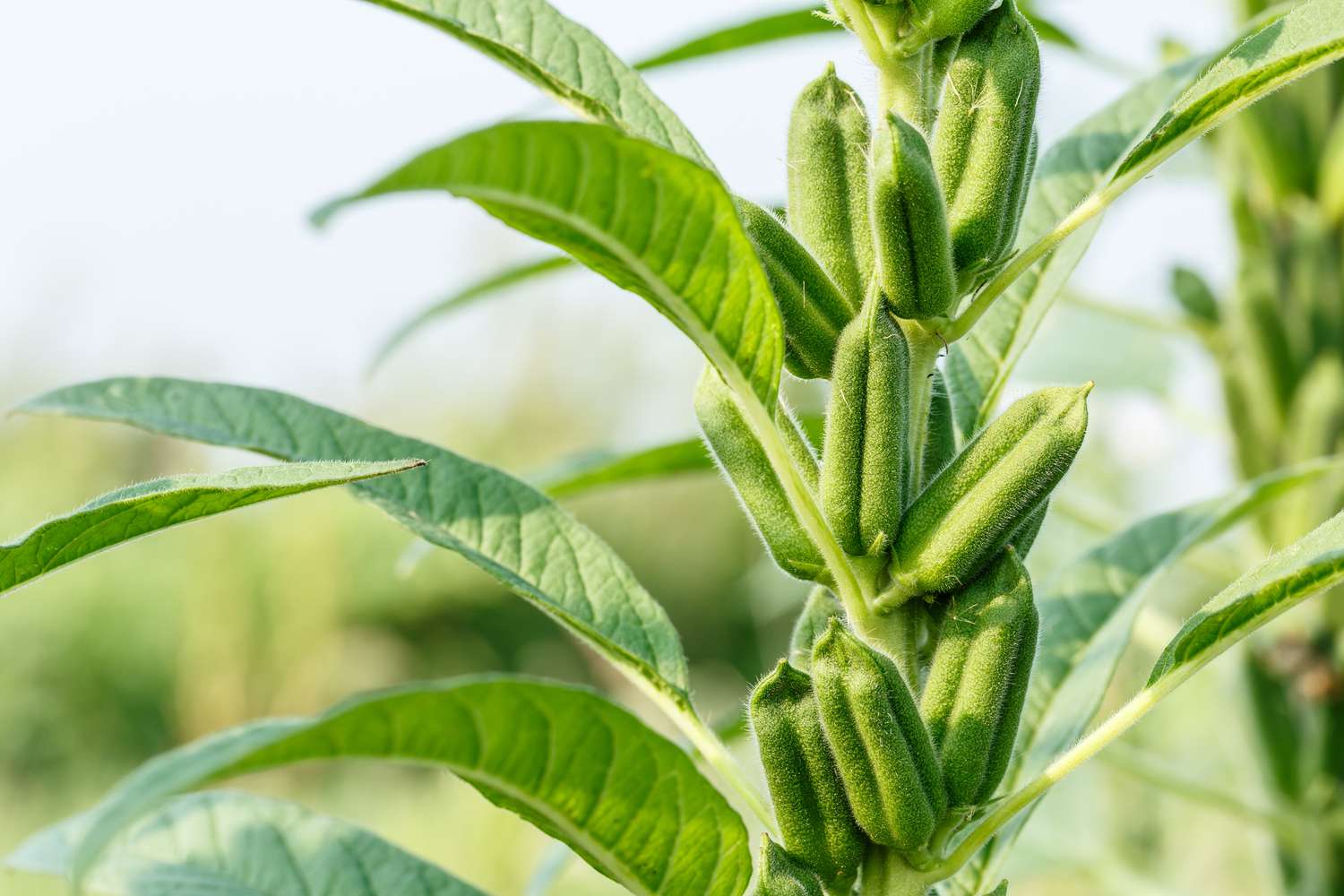
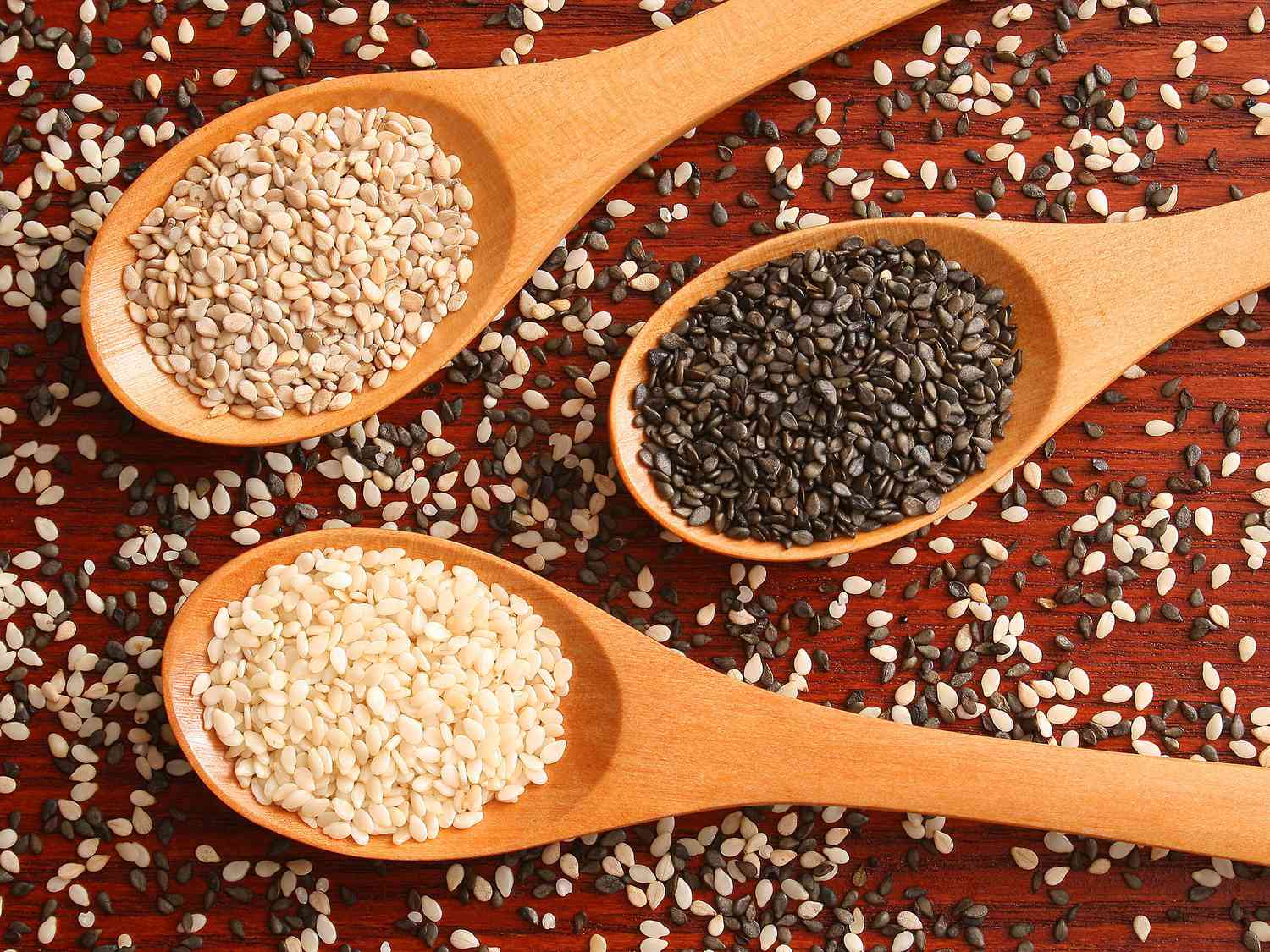
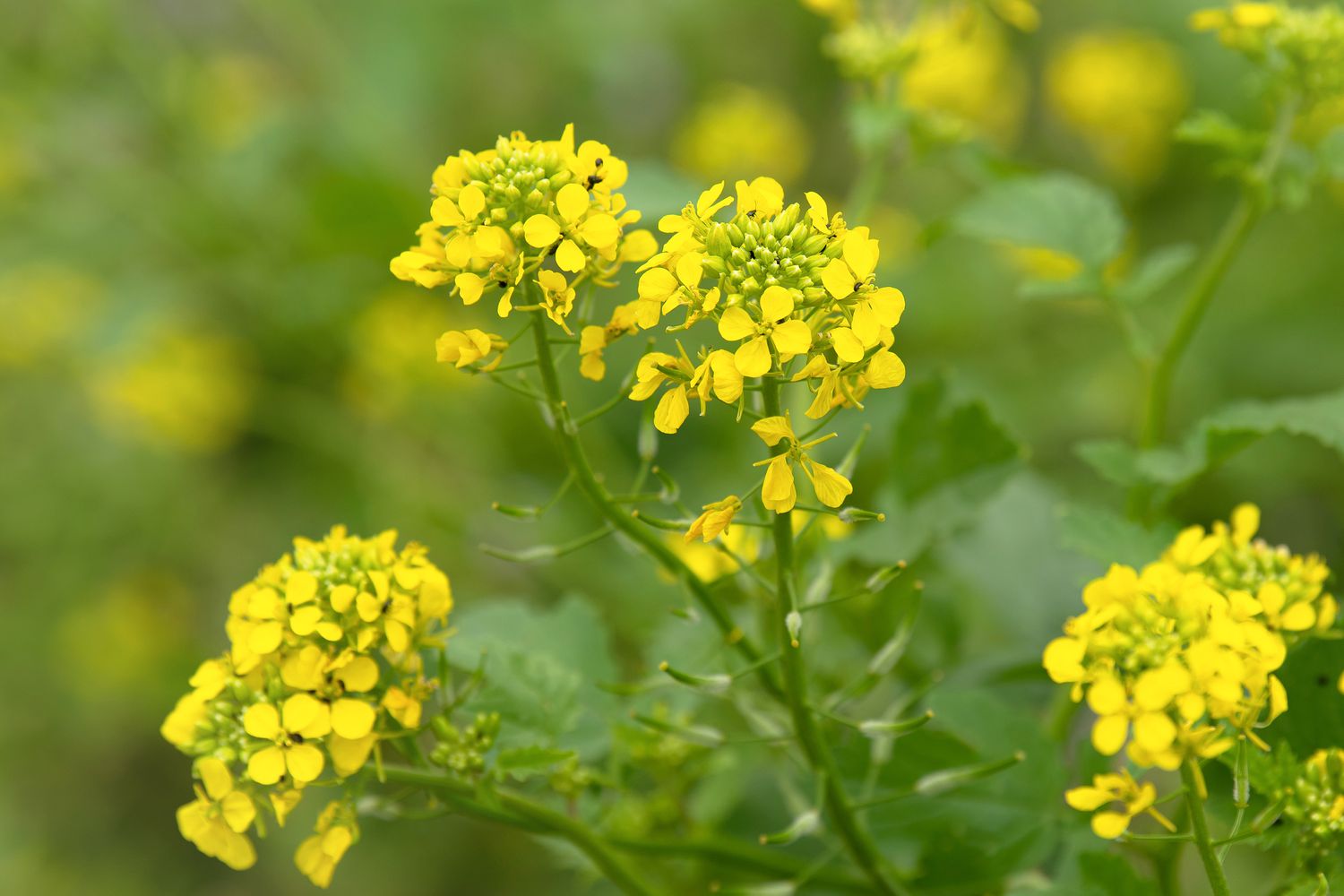
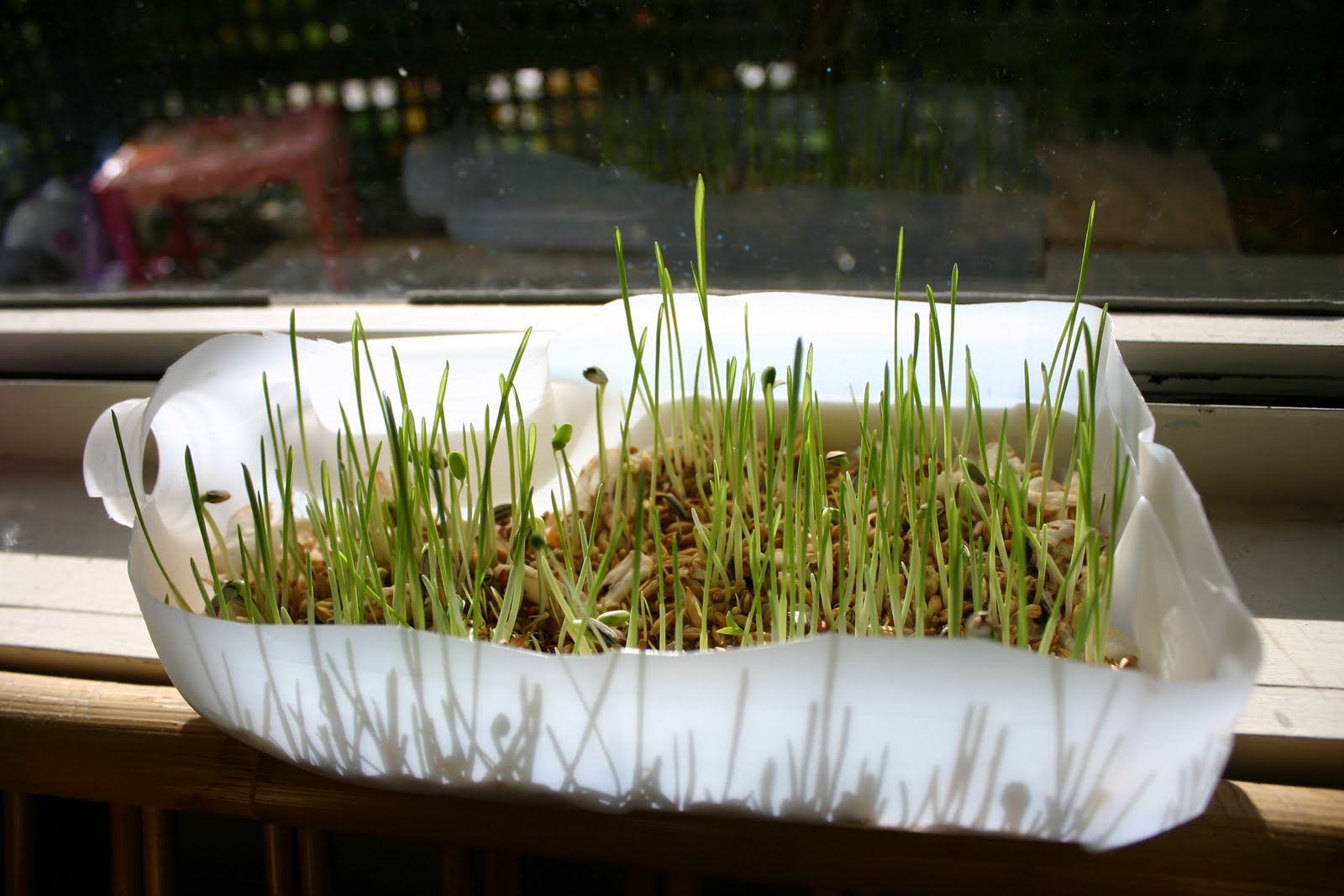
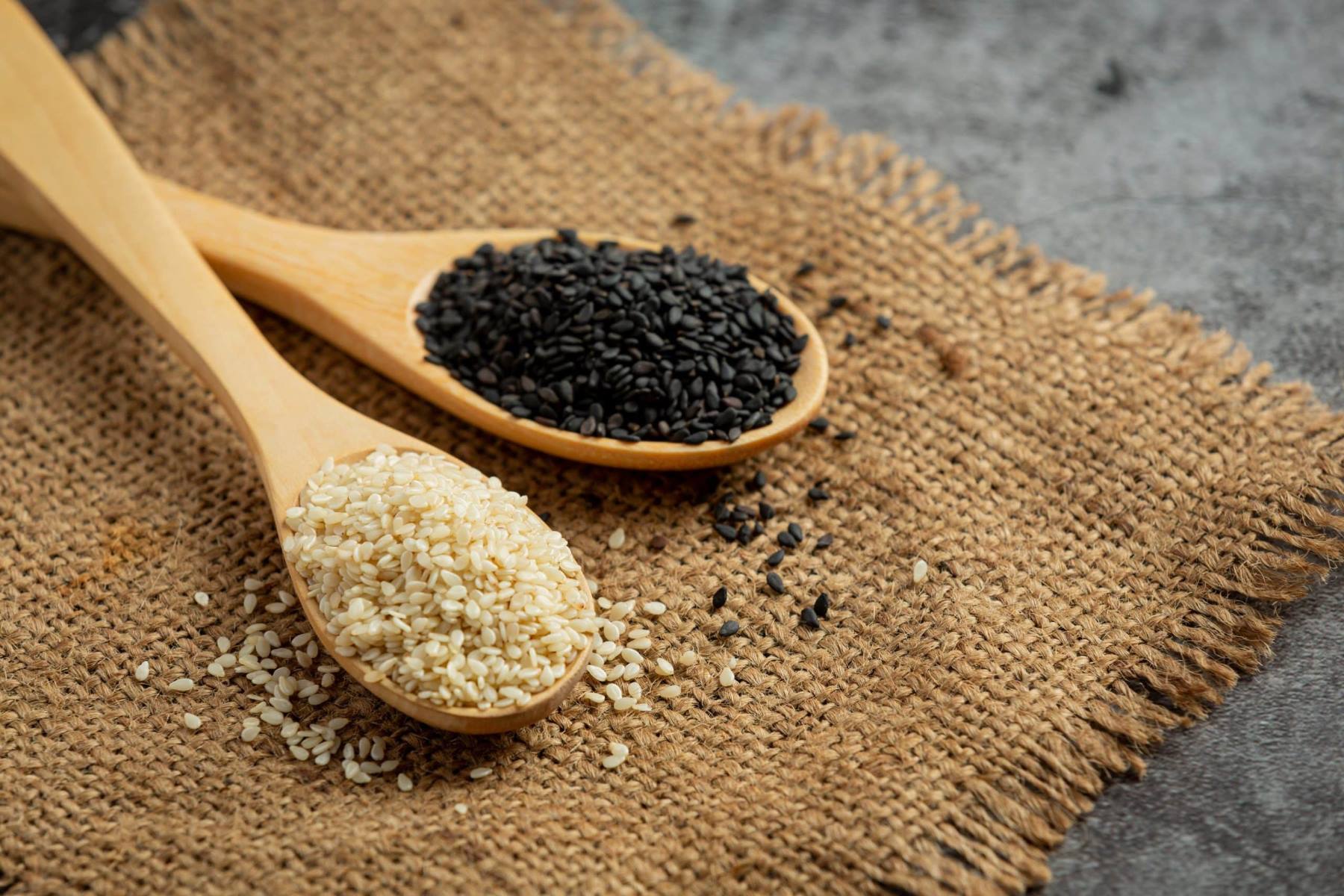
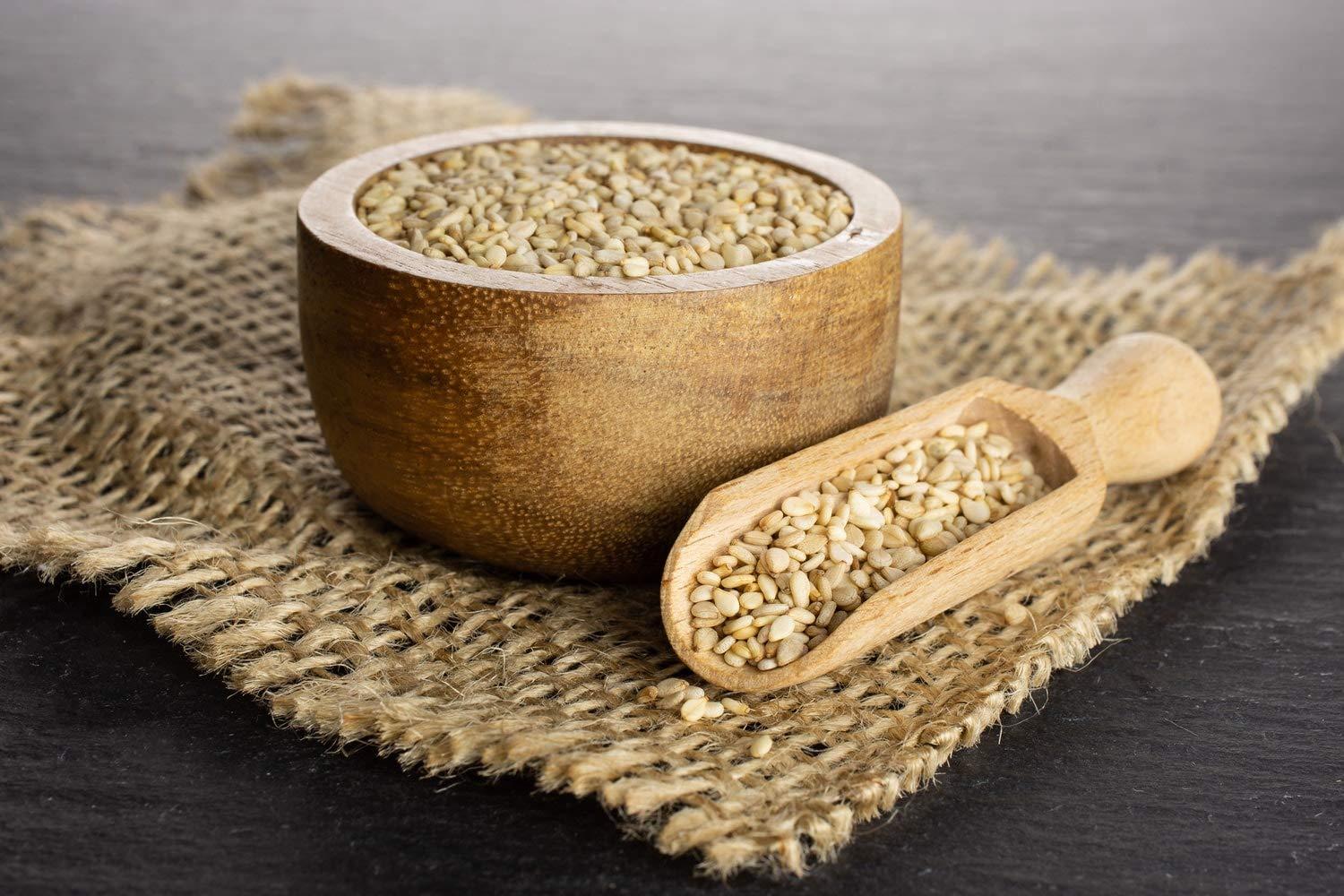

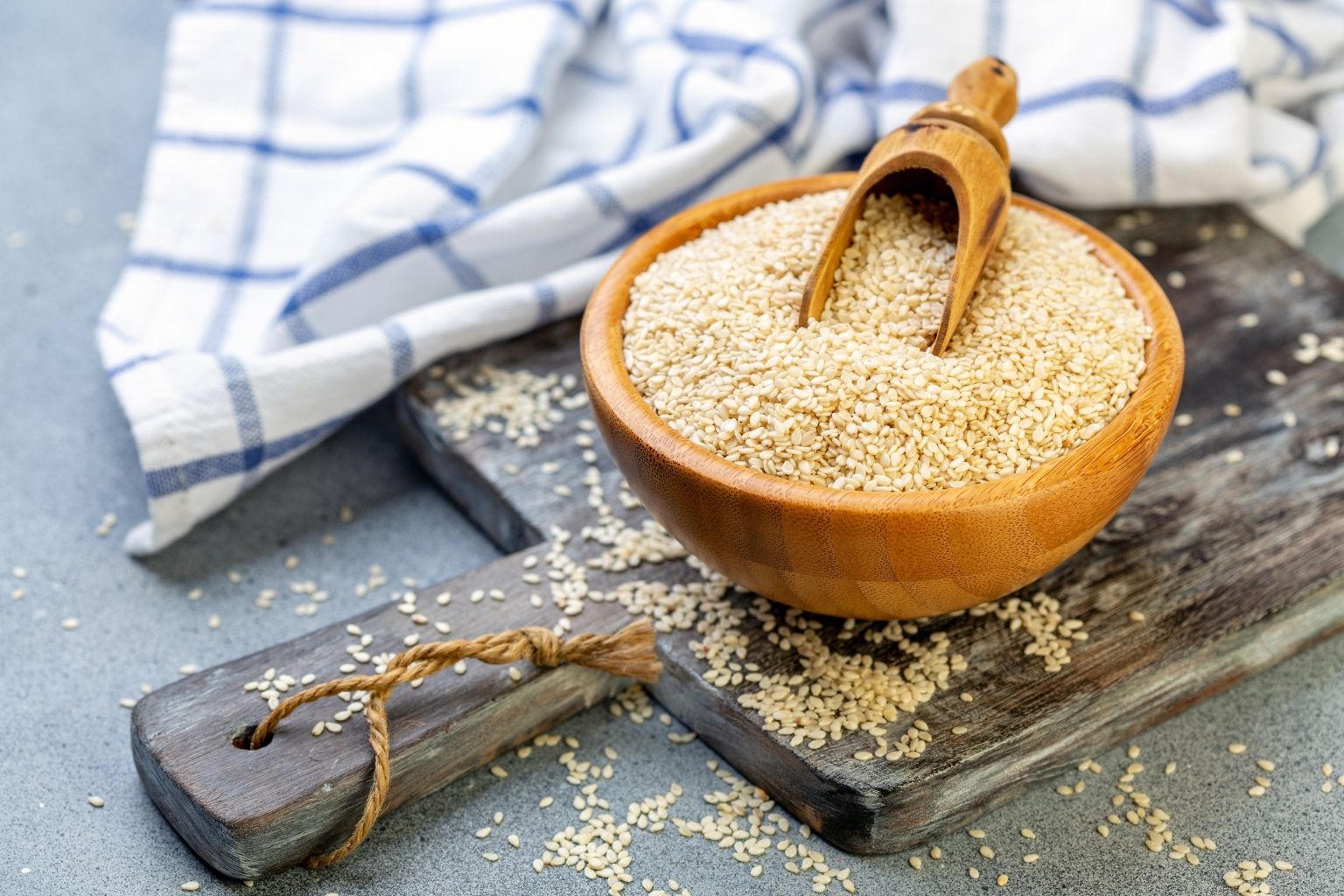
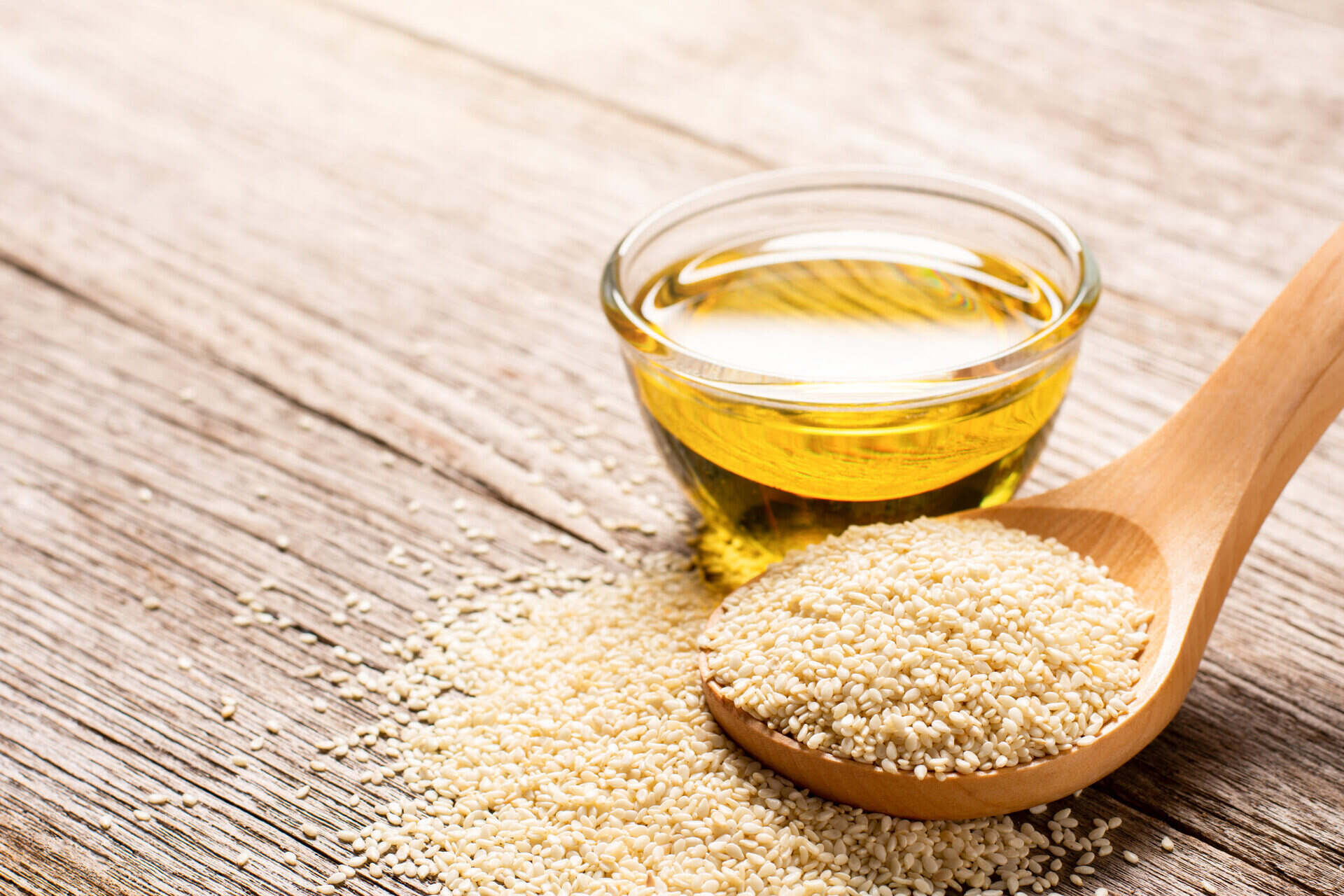
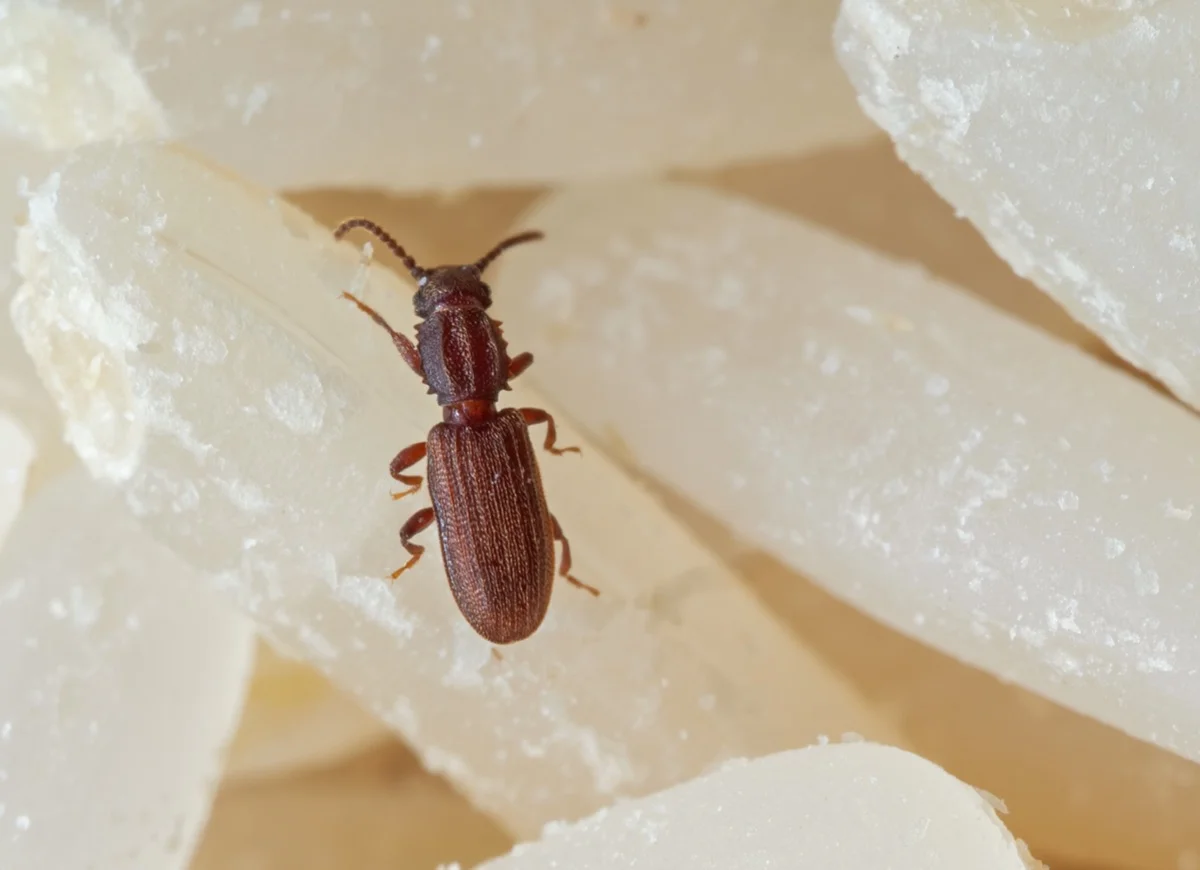
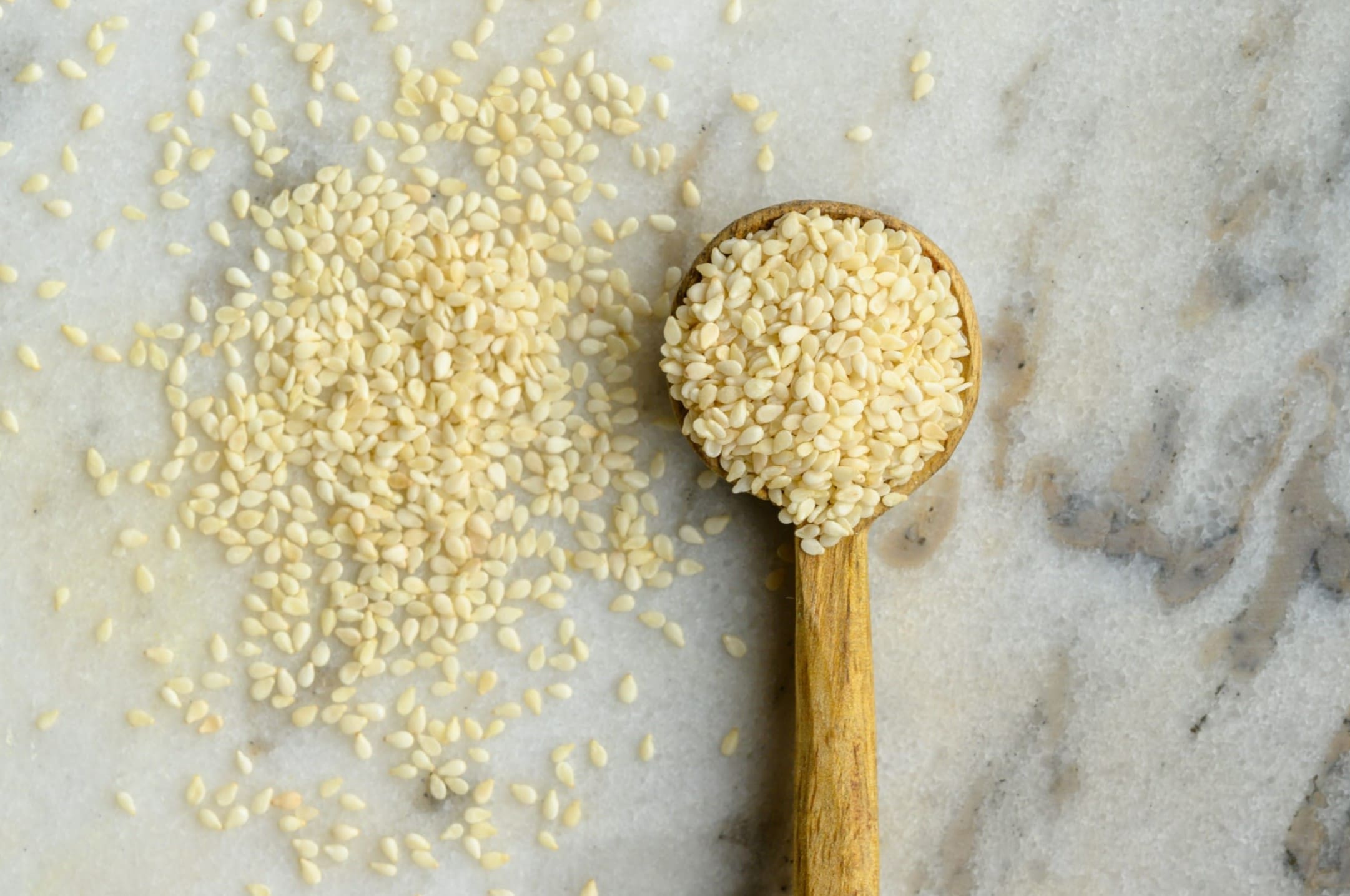
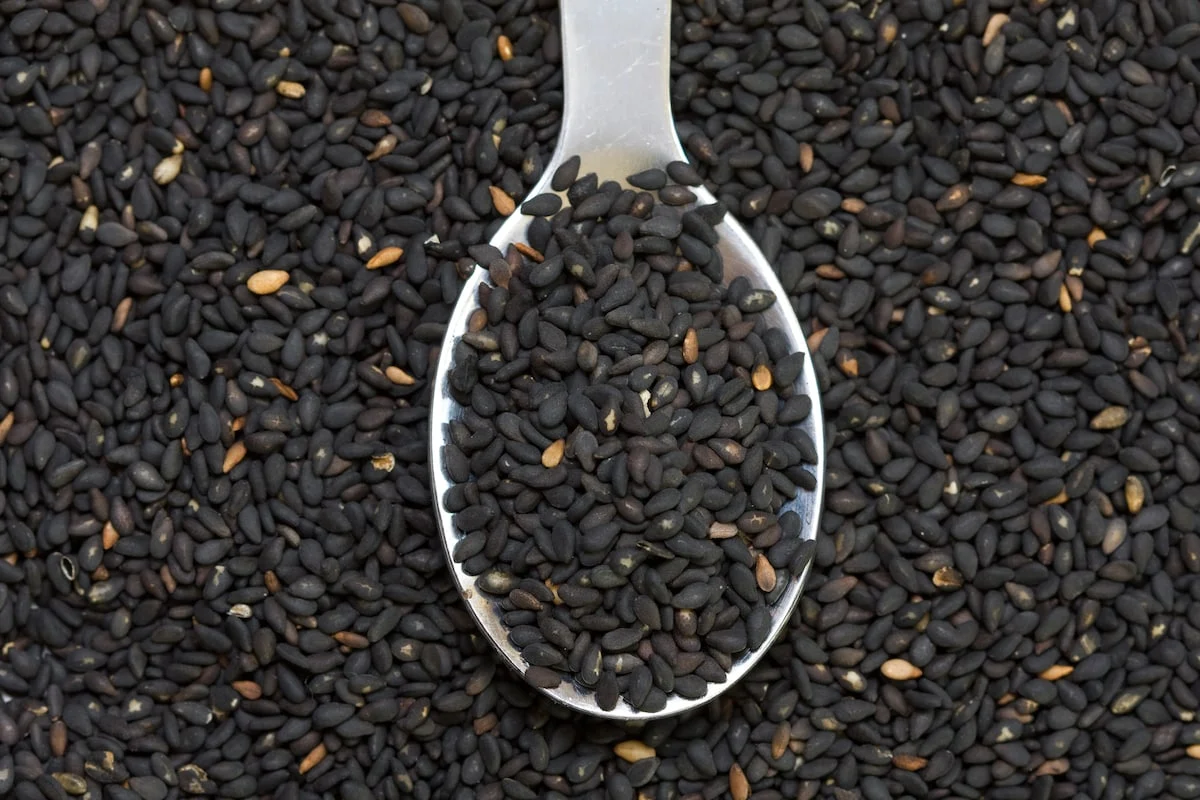

0 thoughts on “What Does A Sesame Seed Grow Into”